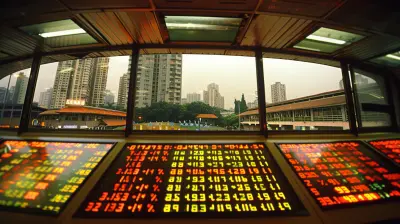Market Bubbles: When to Hold and When to Fold
28 May 2025
Investing in the financial markets is often like riding a rollercoaster. Prices soar to euphoric heights, only to come crashing down when you least expect it. One of the most fascinating (and terrifying) phenomena in investing is a market bubble—a period when asset prices move way beyond their intrinsic value.
But here’s the million-dollar question: Should you hold or should you fold when faced with a market bubble? Knowing when to ride out the storm and when to exit can mean the difference between building wealth and losing it all.
In this article, we’ll dive into what market bubbles are, how to recognize them, and most importantly, how to decide whether to hold on or cash out before it’s too late. 
What Is a Market Bubble?
A market bubble happens when the price of an asset (stocks, real estate, cryptocurrencies—you name it) rises rapidly, far beyond its actual value. This is fueled by speculators, hype, and the fear of missing out (FOMO). However, bubbles inevitably burst, sending prices plummeting and leaving many investors in financial ruin.Classic examples of market bubbles include:
- The Dot-Com Bubble (1999-2000) – When internet stocks skyrocketed before crashing hard.
- The Housing Bubble (2007-2008) – When real estate prices surged on bad loans, leading to the financial crisis.
- Bitcoin Mania (2017, 2021) – Crypto prices soared, then tumbled within months.
Every time, investors get caught in the hype, and history repeats itself. 
The Five Stages of a Market Bubble
Most bubbles follow a predictable five-stage cycle:1. Displacement
A new trend or innovation captures investors' attention (think the internet in the late '90s or blockchain technology).2. Boom
Prices start rising, attracting more investors. The media fuels excitement, and FOMO kicks in.3. Euphoria
This is the danger zone. Everyone is convinced that prices will "only go up." People ignore red flags and throw money at anything.4. Profit-Taking
Smart investors start exiting before the crash, cashing in on their huge gains. But many still hold on, expecting another surge.5. Panic
Reality sets in. Prices plummet, and panic selling begins. Those who bought at the top lose big.
Signs You’re in a Market Bubble
So how can you tell if you’re caught in a bubble? Here are some red flags:✅ Excessive Hype: Everyone—from your hairdresser to your cab driver—is talking about the same “hot” investment.
✅ Extreme Valuations: The asset is trading at ridiculously high prices compared to historical averages or actual earnings.
✅ Speculation Over Fundamentals: People buy not because they understand the business but because they expect prices to keep rising.
✅ Easy Credit: If banks are handing out loans like candy to fuel asset purchases, that’s a warning sign.
✅ Parabolic Price Movements: When price charts look like a hockey stick, brace yourself.
If you’re noticing these signs, you might be in a bubble. Now, let’s get to the real question—what do you do about it? 
When to Hold
Sometimes, holding through a bubble can work if you have the right strategy. Here’s when you might want to stay put:1. You Believe in the Long-Term Value
If your investment has strong fundamentals (solid revenue, profit growth, innovation), it might recover even after the bubble pops. Think of companies like Amazon, which survived the dot-com crash and became a trillion-dollar giant.2. You Have a Long Investment Horizon
If you’re in it for the long haul, short-term volatility might not matter. Over time, markets tend to recover, especially for quality assets.3. You're Playing with House Money
If you got in early and have already taken some profits, you have less to lose. Holding a portion of your winnings can be a calculated risk.However, even if you choose to hold, don’t be blind to warning signs. Be ready to pivot if needed.
When to Fold
Selling during a bubble can be tough—especially when everyone else seems to be making money. But knowing when to exit can save you from financial disaster. Here’s when you should consider folding:1. Prices Are Driven by Hype, Not Reality
If an asset’s valuation is built on speculation rather than actual business performance, it’s a ticking time bomb.2. Smart Money Is Leaving
If experienced investors and industry insiders start selling, take notice. They usually know something the general public doesn’t.3. You Can’t Handle the Volatility
If wild price swings are keeping you up at night, it might be better to secure your profits and sleep better.4. You Need the Money in the Near Future
If you’ll need cash soon (for a home, tuition, or retirement), locking in profits is a wise move rather than risking a sudden crash.5. The Market Feels "Too Easy"
If making money feels effortless, that’s a clue that things might be unsustainable. Markets don’t work that way forever.If any of the above rings true, consider taking profits before it's too late. You don’t have to sell everything at once—gradually scaling out can be a smart approach.
Strategies to Handle Market Bubbles
Worried about getting caught in the next bubble? Here are some strategies to protect yourself:1. Take Partial Profits
Selling part of your position locks in some gains while still allowing you to ride the potential upside.2. Use Stop-Loss Orders
Set a stop-loss to automatically sell if the price drops to a certain level. This prevents emotions from clouding your judgment.3. Diversify Your Portfolio
Never put all your money in one asset or sector. A balanced portfolio can cushion the impact of a bubble burst.4. Follow Smart Investors
Pay attention to what experienced investors are doing. If Warren Buffett is dumping an asset, it’s worth investigating why.5. Stay Disciplined
Stick to your investment strategy rather than chasing quick profits. If something feels too good to be true, it usually is.Final Thoughts: Timing is Everything
Market bubbles are tricky. Selling too early means missing out on potential gains. Selling too late means riding the crash down. While there's no magic formula to predict the perfect exit, understanding the signs and staying disciplined can make all the difference.So, next time you find yourself caught in the excitement of a surging market, ask yourself: Am I holding for the right reasons, or am I just afraid of missing out? Your financial future may depend on the answer.
all images in this post were generated using AI tools
Category:
Speculative InvestingAuthor:

Harlan Wallace
Discussion
rate this article
3 comments
Isolde Fisher
This article offers valuable insights into navigating market bubbles. It's a reminder of the importance of research and patience in investing. I appreciate the clarity and practical advice shared. Thank you for this informative read!
June 6, 2025 at 3:37 AM

Harlan Wallace
Thank you for your thoughtful feedback! I'm glad you found the insights helpful. Happy investing!
Alice McConnell
Great insights! Understanding market psychology is crucial. Remember to assess fundamentals and risk tolerance before making decisions; timing can be tricky in volatile markets!
June 2, 2025 at 4:40 AM

Harlan Wallace
Thank you! You're absolutely right—balancing market psychology with fundamentals and risk tolerance is key to navigating volatility.
Delta McGinnis
Market bubbles are not just cautionary tales; they're opportunities for the bold. Mastering the timing of your moves separates the daring investors from the stagnant. Trust your instincts, research relentlessly, and embrace risk—either lead or get left behind!
May 29, 2025 at 2:41 AM

Harlan Wallace
You make a compelling point! Seizing the moment in market bubbles requires both courage and thorough research. It's all about balancing risk with informed decision-making.



